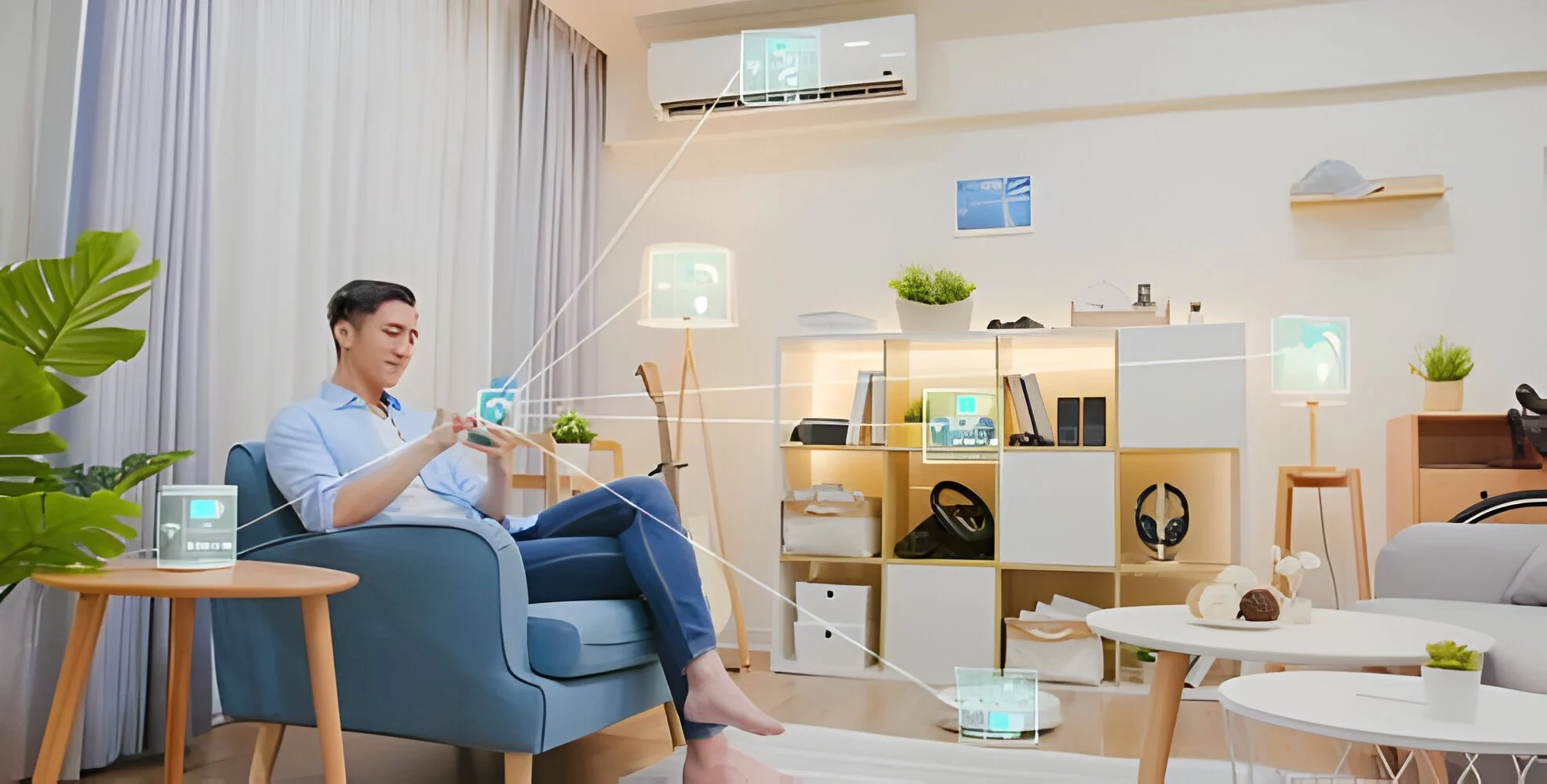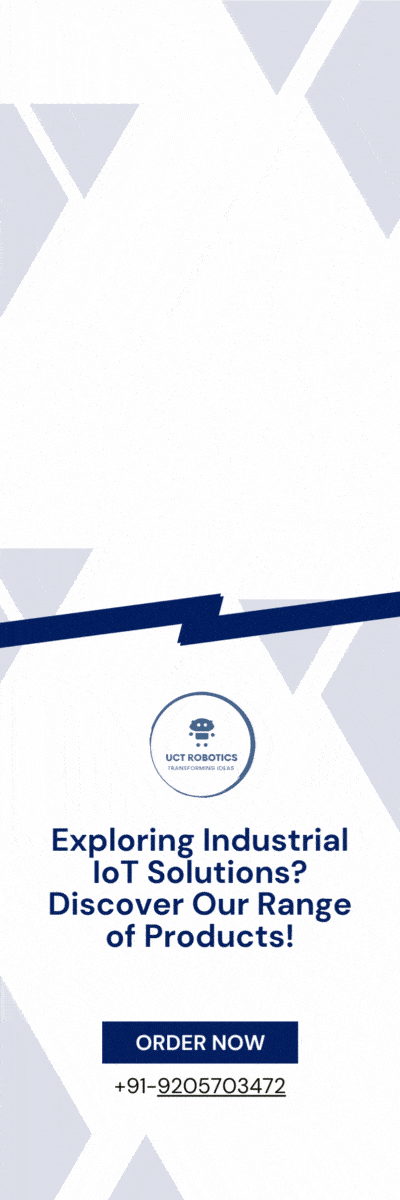Published Date: 13th May, 2024 Uploaded By: Admin
Home automation system using
iot
In today's fast-paced world, home automation system using iot technology have become essential. These systems bring unparalleled convenience and control to homeowners, allowing them to manage their homes remotely and effortlessly. With smart devices seamlessly integrated and powered by IoT, modern living is optimized for efficiency, comfort, and security. From energy management to enhanced connectivity, IoT-driven automation is reshaping how we experience and interact with our homes, making everyday life more convenient and enjoyable than ever before.

The Importance of home automation system using iot
IoT, or the Internet of Things, plays a crucial role in smart home automation systems by connecting various devices and enabling seamless communication and control. Here are some key points highlighting the significance of IoT in home automation:
- Interconnectivity:
- IoT allows different devices, such as thermostats, lights, security cameras, and appliances, to communicate with each other.
- This interconnectivity enables automated workflows and smarter decision-making based on data from multiple sources.
- Remote Monitoring and Control:
- IoT-enabled home automation systems empower homeowners to monitor and control their devices remotely.
- Users can adjust the thermostat, check security cameras, or turn off lights from anywhere with an internet connection.
- Energy Efficiency:
- IoT sensors and smart algorithms optimize energy usage in homes.
- Smart thermostats learn residents' schedules and adjust temperature settings accordingly, leading to energy savings without compromising comfort.
- Enhanced Security:
- IoT-based security systems integrate sensors, cameras, and alarms to provide comprehensive protection.
- These systems send real-time alerts to homeowners' devices and trigger automated responses like locking doors or turning on lights in case of suspicious activity.
- Personalized Experiences:
- IoT collects and analyzes data about residents' habits and preferences, enabling personalized experiences.
- Smart lighting systems adjust brightness and color based on the time of day or occupants' activities.
- Health and Well-being:
- IoT devices support health monitoring and assistance for residents, especially the elderly or those with medical conditions.
- They track vital signs and remind users to take medication, contributing to improved well-being and safety.
- Data Analytics and Insights:
- The data generated by IoT devices offer valuable insights for homeowners and service providers.
- Analyzing this data leads to better decision-making, predictive maintenance for appliances, and customized recommendations for users.
- Scalability and Flexibility:
- IoT-based home automation systems are highly scalable and flexible.
- Homeowners can easily add new devices or integrate third-party services to expand functionality according to their evolving needs.
Benefits of Implementing home automation system using iot
- Convenience: Control various devices and systems in your home remotely through a smartphone or voice commands, enhancing convenience and saving time.
- Energy Efficiency: Optimize energy usage by monitoring and controlling lighting, heating, and cooling systems based on occupancy and preferences, leading to reduced utility bills.
- Enhanced Security: Receive real-time alerts and monitor your home security cameras remotely, ensuring peace of mind and quick response to any security threats.
- Safety: Utilize smart sensors to detect hazards like gas leaks or water leaks, enabling timely intervention and preventing potential accidents.
- Customization: Tailor settings to fit your lifestyle and preferences, creating personalized schedules and automations for different activities and times of the day.
- Remote Monitoring: Keep an eye on your home from anywhere in the world, allowing you to check in on pets, elderly family members, or ensure that appliances are turned off.
- Integration: Seamlessly integrate various IoT devices and platforms, enabling centralized control and interoperability among different smart home technologies.
- Health and Wellness: Monitor environmental factors like air quality and temperature, promoting a healthier indoor environment and better well-being for occupants.
- Increased Property Value: Homes equipped with smart technologies generally have higher market value and appeal to tech-savvy buyers, potentially increasing resale value.
- Sustainability: Reduce your carbon footprint by optimizing resource usage and promoting eco-friendly practices, contributing to a more sustainable lifestyle.
Challenges and Solutions in home automation system using iot
- Interoperability Issues:
- Understanding Compatibility Challenges Among IoT Devices
- Addressing Protocol and Communication Standards
- Data Privacy and Security Concerns:
- Safeguarding Personal Information in Connected Environments
- Implementing Encryption and Authentication Measures
- Reliability and Connectivity Challenges:
- Dealing with Network Instabilities and Downtime
- Ensuring Seamless Connectivity Across Devices and Environments
- Complex Installation and Setup Processes:
- Streamlining Installation Procedures for Non-Technical Users
- Providing User-Friendly Setup Guides and Tutorials
- Cost and Affordability Considerations:
- Managing Budget Constraints in Implementing IoT Solutions
- Exploring Cost-Effective Alternatives and Scalability Options
- User Interface and Experience Design:
- Enhancing User-Friendly Interfaces for Control and Monitoring
- Optimizing User Experience Across Different Devices and Platforms
- Scalability and Future-Proofing Challenges:
- Planning for Future Expansion and Integration Needs
- Choosing Flexible Solutions That Can Adapt to Evolving Technologies
- Power Consumption and Battery Life:
- Optimizing Energy Usage for IoT Devices
- Extending Battery Life and Efficiency in Wireless Devices
- Integration with Legacy Systems:
- Integrating IoT Solutions with Existing Home Automation Infrastructure
- Retrofitting Older Systems for IoT Compatibility
- Regulatory Compliance and Legal Considerations:
- Adhering to Data Protection Regulations and Privacy Laws
- Ensuring Compliance with Industry Standards and Certifications
What are the future trends and innovations expected in home automation systems using IoT?
- AI Integration: AI algorithms will enhance home automation by learning user preferences for adaptive functionality.
- Voice Control Advancements: Voice assistants like Alexa and Google Assistant will become more intuitive, controlling a wider array of devices.
- 5G Connectivity: The rollout of 5G networks will revolutionize home automation, enabling real-time communication and cloud integration.
- Edge Computing: Adopting edge computing in home automation will ensure faster response times and improved privacy and security.
- Interoperability Standards: Common standards like Project CHIP will facilitate seamless integration among different smart devices.
- Energy Harvesting: Innovations in energy harvesting will enhance sustainability by reducing reliance on batteries or wired power sources.
- AR Interfaces: AR interfaces in home automation apps will offer immersive visualization and interaction with smart devices.
- Health Monitoring: Sensors and wearables will monitor occupants' health, providing insights for improved well-being.
- Smart Grid Integration: Integrating with smart grids will optimize energy usage, leading to cost savings and sustainability benefits.
- Security Enhancements: Enhanced security protocols like encryption and decentralized storage will address cybersecurity and privacy concerns in IoT-based home automation.
Exploring Key Components of home automation system using iot
- Sensors: Gather data from the home environment including motion, temperature, humidity, and light.
- Actuators: Perform physical actions based on commands from the automation system, such as switches, blinds, locks, thermostats, and appliances.
- Hub or Gateway: Acts as the central control unit, connecting all devices and sensors, enabling communication and coordination between them.
- Communication Protocols: Standards used by devices to communicate with each other and the central hub, including Wi-Fi, Zigbee, Z-Wave, Bluetooth, and Thread.
- User Interface: Allows interaction and control through apps, portals, voice assistants, touch panels, and remote controls.
- Cloud Services: Enable remote access and control, allowing management of devices and data from anywhere with an internet connection.
- Machine Learning and AI: Analyze sensor data and user interactions to provide intelligent automation and personalized experiences.
- Security and Privacy Measures: Protect sensitive data and prevent unauthorized access to devices and networks through encryption, authentication, and access controls.
- Energy Management Systems: Optimize energy usage by monitoring and controlling devices, integrating features like energy monitoring, smart scheduling, and renewable energy sources.
- Integration with Third-Party Services: Extend functionality by integrating with voice assistants, smart home ecosystems, and other IoT-enabled services and devices.
Setting up a home automation system using IoT requires
- Planning: Identify areas for automation and consider compatibility and budget.
- Choosing Compatible Devices: Ensure devices work well together and with your chosen platform.
- Starting Small: Begin with essential devices and gradually expand.
- Securing Your Network: Protect your system with strong passwords and regular updates.
- Centralizing Control: Use a central hub for unified management.
- Creating Automation Rules: Streamline tasks with automation based on time or occupancy.
- Personalizing Settings: Customize settings to fit your lifestyle.
- Testing and Troubleshooting: Test thoroughly and troubleshoot issues promptly.
- Backing Up: Regularly back up system configurations to avoid data loss.
- Staying Informed: Keep up with developments and best practices for optimal performance.

About the Author
Uniconverge Technologies is a highly reputed company which offer organizations across the world, a wide gamut of solutions & service in domains like Industrial IoT, Smart infrastructure, Digital transformation, Analytics, Embedded Technologies, and more. We believe providing best product and solution to our customers.
Leave a comment